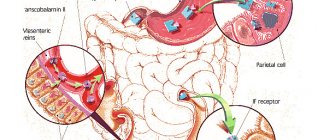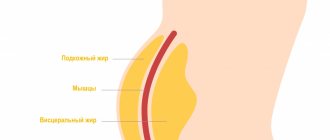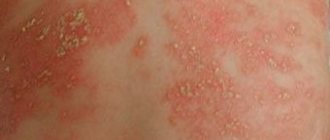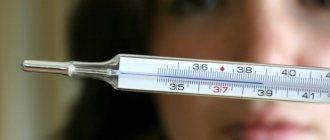Uric acid diathesis is a condition accompanied by an increase in the level of uric acid (more precisely, its salts - urates) in the blood. Normally, its concentration should be 6 mg/dL for women and 6.8 mg/dL for men.
High levels of uric acid lead to the formation of crystals, which settle in the joints and cause gout. If they accumulate in the kidneys, stone disease develops. Research has also linked uric acid kidney disease to cardiovascular disease, type 2 diabetes, high blood pressure and non-alcoholic fatty liver disease.
Causes of the disease
Uric acid is a substance that is formed when purines are broken down. Most of it dissolves in the blood, passes through the kidneys and is excreted from the body along with urine. An increase in uric acid levels can occur for the following reasons:
- the kidneys stop effectively filtering and removing uric acid from the blood;
- a person consumes a lot of foods high in purines (red meat, legumes, liver, seafood, alcoholic beverages, especially beer);
- the body produces too much uric acid.
In the latter case, the cause of increased levels of purine metabolic products is most often genetic disorders.
Prevention
In order not to provoke the appearance of urolithiasis, preventive measures should be observed:
- Lead an active lifestyle: moderate exercise, giving up bad habits, frequent walks in the fresh air.
- Resist stress and nervous overload (vitamin complex, self-discipline, yoga).
- Try to avoid overeating and consuming high-calorie, canned, salty, smoked and fatty foods.
- Increase the amount of fluid you drink.
- Include fruits and vegetables in your diet.
Symptoms of uric acid diathesis in men, women and children
Often the condition does not manifest itself, but if left untreated it can lead to the development of certain diseases.
Uric acid diathesis is more common in men than in women (17.3% compared to 10%). This may be related to estrogen levels. These hormones are known to help remove uric acid from the body. Symptoms of uric acid diathesis in women most often appear during menopause, which is also due to a decrease in estrogen levels. The main manifestations of a persistent increase in uric acid in the blood are:
- Gout. This disease is also called gouty arthritis. It occurs in approximately 20% of patients with uric acid diathesis. Gout can affect any joint in the human body, but most commonly affects the big toe, feet, ankles, knees and elbows. Attacks of the disease occur suddenly, often at night. The joint swells, the skin over it turns red. A sharp pain appears. In severe cases, the joints may become deformed.
- Stones in the kidneys. Uric acid crystals deposited in the kidneys often lead to the formation of stones. Small stones (sand) are excreted in the urine. However, large stones can block the urinary tract. This condition is characterized by severe pain in the lower back or side, nausea, frequent urge to urinate, and blood in the urine. Obstructed outflow creates favorable conditions for the proliferation of bacteria - a kidney infection develops.
Uric acid diathesis in infants is by no means a rare occurrence. The main sign that you need to pay attention to is too bright urine stains on diapers, since the disease is characterized by intense coloration.
In older children, the diagnosis of “uric acid diathesis” can be made against the background of increased production of uric acid. This occurs in the presence of certain genetic diseases, such as Lesch-Nyhan syndrome, Kelly-Siegmiller syndrome and others.
Unfavorable factors
There are no specific causes of urolithiasis, but there are a number of factors that adversely affect the patient’s health and lead to urolithiasis. There are negative aspects of an external and internal nature. In the first case, it is worth talking about the following points leading to the formation of stones:
- Violation of phosphorus-calcium metabolism (relevant for elderly and sedentary people).
- Poor nutrition and passion for salty, sour, smoked, canned, protein foods (acidification of urine occurs).
- Atypical drinking water (with excess calcium salts) is a trigger for kidney stones.
- Harmful production work.
- Reduced levels of vitamins A and group B.
- Negative effects of drugs with sulfonamides and ascorbic acid.
Potential patients with urolithiasis are characterized by anatomical anomalies:
- kidney prolapse;
- underdevelopment or absence of one kidney;
- insufficiently wide channels in the urinary system.
Previous inflammations or infections of the bladder and other urinary organs can also cause the accumulation of stones.
Urolithiasis can also be caused by internal unfavorable factors associated with the general state of human health:
- long-term infections;
- dehydration;
- poisoning;
- long forced immobilization (after operations, as a result of injuries);
- disruptions in metabolic processes;
- chronic stages of gastrointestinal diseases.
How is the disease diagnosed?
Typically, your doctor will order blood and urine tests to measure your creatinine and uric acid levels. Blood is taken from a vein. If the results are abnormal, a 24-hour urine test is performed. Typically, it also shows elevated uric acid levels. The patient is then prescribed a purine-restricted diet, followed by a repeat urine test. This approach helps determine whether uric acid diathesis is caused by:
- consuming large amounts of purines in food;
- hyperproduction of uric acid in the body;
- insufficiently effective removal of purine metabolic products from the body.
If you have symptoms of gout, your doctor will recommend testing your intra-articular fluid. A sample is taken using a thin needle. If uric acid crystals are found in the fluid, a diagnosis of gout is made.
Diagnostics
The difficulty in determining urolithiasis is that its manifestations may be similar to other diseases: appendicitis, gallstones, ectopic pregnancy, stomach ulcers, etc. To clarify the diagnosis, contact the Global Clinic Center, where qualified doctors will offer the most modern methods for identifying urolithiasis. Diagnostic methods for determining the formation of stones in the urinary system:
- Consultation with a urologist, during which an experienced specialist will examine the patient and ask many questions to collect a history of the disease.
- Application of ultrasound. An ultrasound is done to visualize stones, check the kidneys, bladder, and urinary tract.
- Survey urography. Helps assess the condition of the kidneys and the location of the stone.
- Blood and urine tests (general and biochemical). Be sure to test your urine for acidity. Laboratory tests reveal the chemical composition of stones.
- Radiography. In 96 out of a hundred patients, a shadow of a stone can be detected on an x-ray.
- Urine culture to determine microflora (the goal is to exclude infections).
Computed tomography is rarely used in cases of suspected urolithiasis, because this type of examination does not give a complete picture of the stones and does not have the best effect on the organs. If it is necessary to differentiate between urolithiasis and ureteral oncology, doctors use an invasive method - diagnostic retrograde endoscopic ureteropyeloscopy. The result of this manipulation is crushing the stones or taking tissue for a biopsy. High diagnostic information can be obtained by conducting nuclear magnetic resonance imaging.
How to treat uric acid diathesis
The choice of treatment method depends on the cause of the disease. If it is asymptomatic, treatment is not required, since the benefit of drugs that reduce uric acid levels has not been proven. In all other cases, the underlying disease is treated.
To reduce the severity of gout symptoms, the following are prescribed:
- non-steroidal anti-inflammatory drugs;
- Colchicine;
- Allopurinol.
For kidney stones smaller than 5 mm, your doctor may advise drinking plenty of water and taking over-the-counter pain relievers until the stones pass on their own. Sometimes drugs are also prescribed that normalize purine metabolism and facilitate the removal of kidney stones from the body, such as Restructa Pro Injection S and Urolesan.
For larger stones, extracorporeal shock wave lithotripsy or surgery is prescribed.
Treatment of urolithiasis
The disease is treated conservatively and surgically. Patients need to understand the complexity associated with urolithiasis: the possibility of relapses and the formation of new stones.
Conservative methods
The complex of conservative therapy includes:
- diet;
- drinking plenty of water;
- the use of herbal infusions that enhance urine output;
- taking medications for stone dissolution (with mandatory consideration of contraindications).
Medicines for dissolving stones are selected by urologists taking into account the chemical composition of the stones. Symptomatic treatment will help patients get rid of pain (painkillers), inflammation (anti-inflammatory drugs), bacteria (antibacterial drugs). Physiotherapy is prescribed only after the end of the acute period of urolithiasis.
Surgical methods
If conservative therapy does not bring a positive result, doctors apply a shock wave to the stones (lithotripsy). This method is especially effective for large stones and complex configurations. The shock wave helps to break up the stones into small parts for their further removal from the body naturally or surgically. If this method of combating urolithiasis is ineffective, then you have to turn to surgeons.
Frequently asked questions about uric acid diathesis
What to do if you have uric acid diathesis?
First of all, consult a doctor. Now there are medications that effectively cope with the consequences of uric acid diathesis, such as gout and kidney stones.
What may be the primary symptoms?
It all depends on where in the body the uric acid crystals have settled. If the joints are affected, we are talking about gout. The first signs of this disease are pain, swelling and stiffness of the joint (usually the big toe). If the crystals have settled in the kidneys, there may be no symptoms for a long time, since kidney stones form gradually. This can be suspected by such signs as sharp pain in the lumbar region, frequent urge to urinate, and blood in the urine.
What are the most effective drugs?
Treatment should be prescribed by a doctor, since uric acid diathesis can lead to the development of diseases, the treatment methods for which differ significantly.
How to deal with urolithiasis during pregnancy
Treatment of the disease in pregnant women is carried out with great care so as not to harm either the fetus or the expectant mother. Most often, herbal preparations are prescribed (cyston, cystenal, canephron, phytolysin). Physiotherapy during pregnancy is not suitable for combating stones. Sticking to a diet, drinking enough clean water (if there is no swelling), not sitting still - this is what doctors recommend to expectant mothers. High-level specialists of the Global Clinic Center will do everything possible to eliminate discomfort and negative manifestations of the disease in pregnant women. Traditional methods As an additional remedy, but not the main treatment, you can use:
- use of herbs;
- drinking mineral water (selected depending on the type of stone);
- inclusion of healthy foods in food - watermelon, cabbage, strawberries, cranberries.
All traditional recipes require the approval of your doctor.
What is diathesis?
Diathesis is a constitutional anomaly, and now this term is used more as a tribute to the domestic tradition in pediatrics. A similar concept is “hereditary predisposition.” Such signs are not described in foreign literature. There is no separate section for them in the International Classification of Diseases.
Diathesis in children is not a disease, but only a combination of various functional changes that do not always contribute to the development of any diseases. To prevent such a reaction from developing into pathology, it is necessary to monitor the child with an experienced pediatrician and comprehensive treatment of diathesis.










